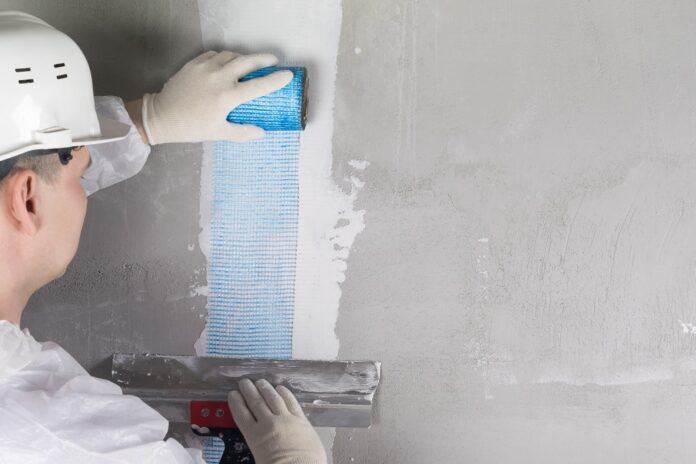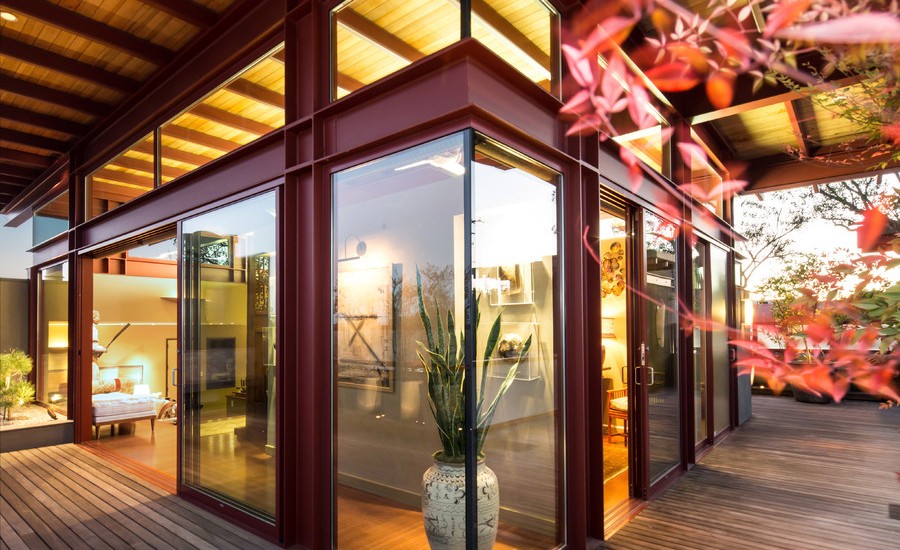Stucco’s an excellent way of adding a protective layer to the siding of your homes. Along with that, it’s aesthetically appealing. Made from a mixture of lime, sand, and water, stucco’s durable and pleasing to the eye. However, this material could suffer from wear and tear over time due to age and adverse weather effects. If this should happen to you, you’ll need to do something to improve your home’s appearance.
Trying to remodel your exterior, specifically if there’s stucco added can be challenging because when stucco dries, it hardens and forms a tough outer shell. But, if you know what you’re doing, renovating the outside of your home can be pretty straightforward. Below, look at the ways you can improve the stucco on your home.
1. Put A Nice Paint Coating On It
One of the most popular and simplest option to improve your stucco home is to paint it. Stucco exteriors that have been well painted can give your home a refreshed, instant brand-new look that can last for years. However, it would be best if you had reputable and experienced stucco exterior painters for a high-quality painting job. Apart from the aesthetic appeal, painting your stucco has other benefits, including:
- It seals the moisture out: Stucco absorbs water; therefore, the right paint could help waterproof the walls.
- It’s an excellent cover for stains: With time, your stucco may start to show coloring from water and rust. A good coat of paint could cover these blemishes for an extended time, improving the overall look of your home.
- Resistance to ultraviolet (UV) rays: If your home is in a warm and sunny climate, UV rays may deteriorate your stucco and cause fractures in the foundation. Painting the exterior creates a shield or sunscreen that deflects UV rays from your walls.
- Filling hairline cracks: Stucco’s known to crack and make hairline cracks which, if left unattended, can grow and lead to more damage. A heavy coat of thick paint could seal the hairline cracks and prevent them from enlarging.
One reason painting stucco is a simple way to improve your home is it doesn’t require you to drill the walls. You only need to prepare your stucco well before applying paint. First, clean the stucco surface and fill any cracks or pits, so the paint’s final result is smooth and consistent. Be sure to do your homework on which paint you choose for the job; not every type of paint is compatible with stucco. Seek professional recommendations for the best brands for the job, especially if you aren’t doing the job yourself.
2. Cover It Up With Siding
Siding can cover the existing stucco and is an option that can create an entirely new look to your stucco exterior. Others wouldn’t know there is stucco on the wall. Whether siding or re-siding, it’s recommended you use a professional contractor.
Siding needs vertical furring strips installed to serve as the point of attachment. These strips prevent the stucco from attaching directly to the siding, potentially cracking and not providing a sufficient seal. Install siding to cover up your stucco and improve your home’s appeal.
3. Go For Veneers
Similar to siding, veneers are also available and suitable for exterior stucco covering. Veneers come in different varieties and resemble other types of material finishes. They can look like brick or stone and are light and easy to install. Veneers are also cheaper than the materials they’re made to look like.
The type of veneer you choose will determine on how it’ll be installed. Many veneers are installed the same as siding, sometimes, contractors apply a thin layer of plaster over a mesh to seal off moisture before installing the veneer.
4. Change The Stucco Texture
If your home was built between the 70s and early 2000s, there’s a possibility you have a rough texture appearance to your stucco. A modern style of stucco is smooth, so changing the style of your stucco can make quite a visual improvement to your home. Apart from updating the appeal of your stucco home, smoothening could help prevent dust from collecting in the indents. Dust in the small spaces of your stucco can give off a shabby appearance in addition to attracting bugs.
The process of changing stucco texture includes smoothening the exterior, power washing, applying a base coat to create a smooth surface, and, lastly, applying the finishing coat. It’s advisable to enlist the services of a professional.
5. Make Repairs
The advantage of having stucco is that it’s relatively low maintenance; even cracks are easy to fix. There are many reasons why your stucco could crack, including age and improper installation. You could use masonry repair caulk found in most hardware stores. Here are other things to consider if you decide to Do-It-Yourself (DIY) and repair your stucco:
- Start caulking before the sun starts because heat causes stucco to expand and cracks in the stucco to shrink, making them harder to repair.
- Fill the cracks with your hand in a soapy rubber glove by pushing the caulk in the gaps and buffing it in circular motions.
- Let the caulk dry properly. If you see the need, apply more because it might shrink too as it dries.
If the cracks are over a quarter-inch, hire a professional because filling these types of cracks require mixing fresh stucco. A professional not only assesses the extent of the damage and its cause, they take measures to avoid the cracks from happening again. Also, a specialist could ensure they match the stucco from your repair with your original stucco to ensure a seamless blend.
Takeaway
Updating stucco can improve the general appeal of your home. In terms of maintenance, ensure to have your stucco regularly and adequately cleaned, especially after a season of harsh weather such as winter. Inconsistent and improper cleaning can become the source of cracks, so hiring experienced cleaners may be the best option. Regardless of the cause of damage to your stucco, instead of incurring a high cost to replace it, you can review this article and update it in various ways.



















